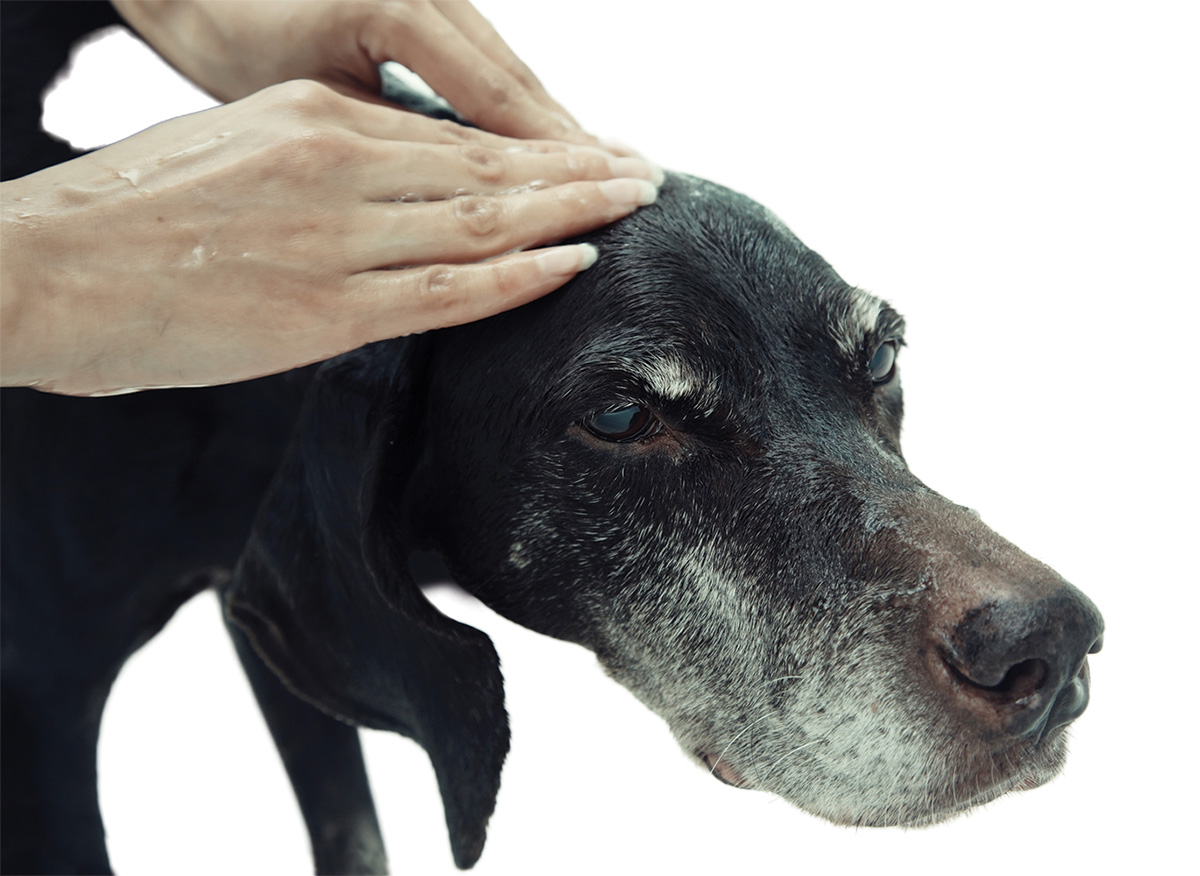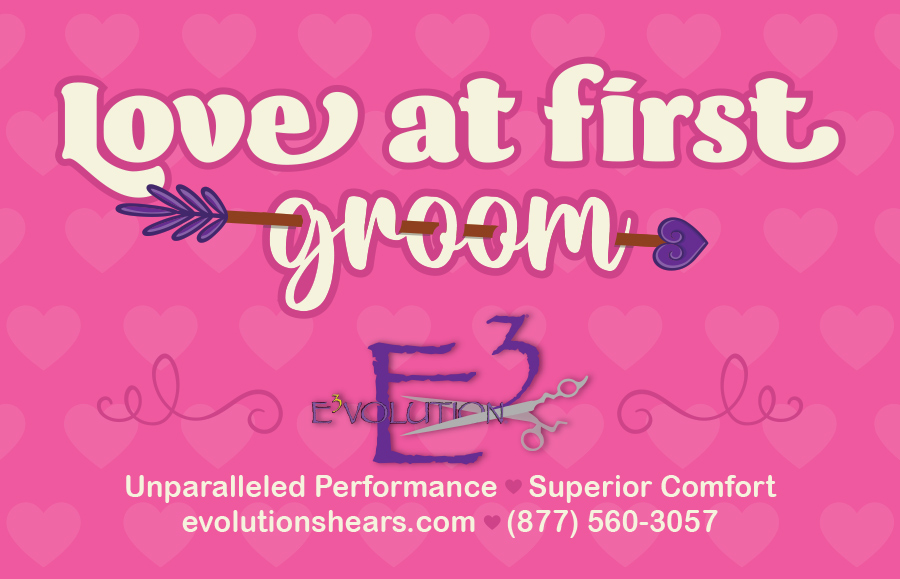
by Hannah Ziegler

 rooming a blind or visually impaired dog is not a frequent occurrence, yet the importance of knowing how to handle a dog with these handicaps can add another specialized skill to your set. It is definitely more difficult and can be intimidating, and there is no shame in turning away a blind or visually impaired dog; however, understanding the reasons behind this handicap and learning tips and tricks will help you be prepared for when that request to groom one comes in.
rooming a blind or visually impaired dog is not a frequent occurrence, yet the importance of knowing how to handle a dog with these handicaps can add another specialized skill to your set. It is definitely more difficult and can be intimidating, and there is no shame in turning away a blind or visually impaired dog; however, understanding the reasons behind this handicap and learning tips and tricks will help you be prepared for when that request to groom one comes in.
A dog can be visually impaired for a variety of reasons. The most common cause is cataracts. Cataracts are when the lens of the pet’s eye becomes cloudy and no longer allows light to pass through. Although treatable, diabetes can increase the chance of cataracts.
Another reason for a dog to become visually impaired or blind is glaucoma. Glaucoma is when fluid is unable to drain, causing escalating pressure in the eye. This can be an excruciating and rapidly forming cause of blindness. A dog’s genetic makeup will determine his likelihood of having glaucoma.
Other issues range from retinal problems to old age. And, many visual impairments are intensified when not treated, leading to further health issues including complete vision loss.
Even though a dog may be born or become blind or visually impaired, he still needs to be groomed. Grooming a blind dog can be intimidating at first, but, by following these simple steps, you can complete your client’s groom without causing added stress:

Be aware that not all owners realize the extent of their dog’s vision loss. For example, I have been grooming an amazing Rottweiler for seven years. He came in the last time diagnosed with diabetes, and the owner either forgot to tell me or was unaware of how much vision their sweet dog had lost. Upon entering my salon, he ran head-first into a wall. I looked at his clouded eyes and began to tentatively groom him. Through my grooming process, I discovered that he had zero vision left. Despite this, he was still the obedient charmer I always knew.
At 120 pounds, I couldn’t lift him into the tub like a smaller blind dog. So, I had to rely on the pattern we had been using for the past seven years. I used many more reassuring words and was in constant physical contact with him. Together we relied on our bond and routine to get through the entire groom, all restraint-free.
Many of us have encountered a blind dog during our years of grooming, and whether he comes to you blind or becomes blind over the years, learning how to handle this special dog is key to keeping him protected and happy. Safety should always be your number one priority, and by being aware of these facts and tips, you’ll be better prepared to groom a blind or visually impaired dog if you choose to work with one, which can be an extremely rewarding experience.


